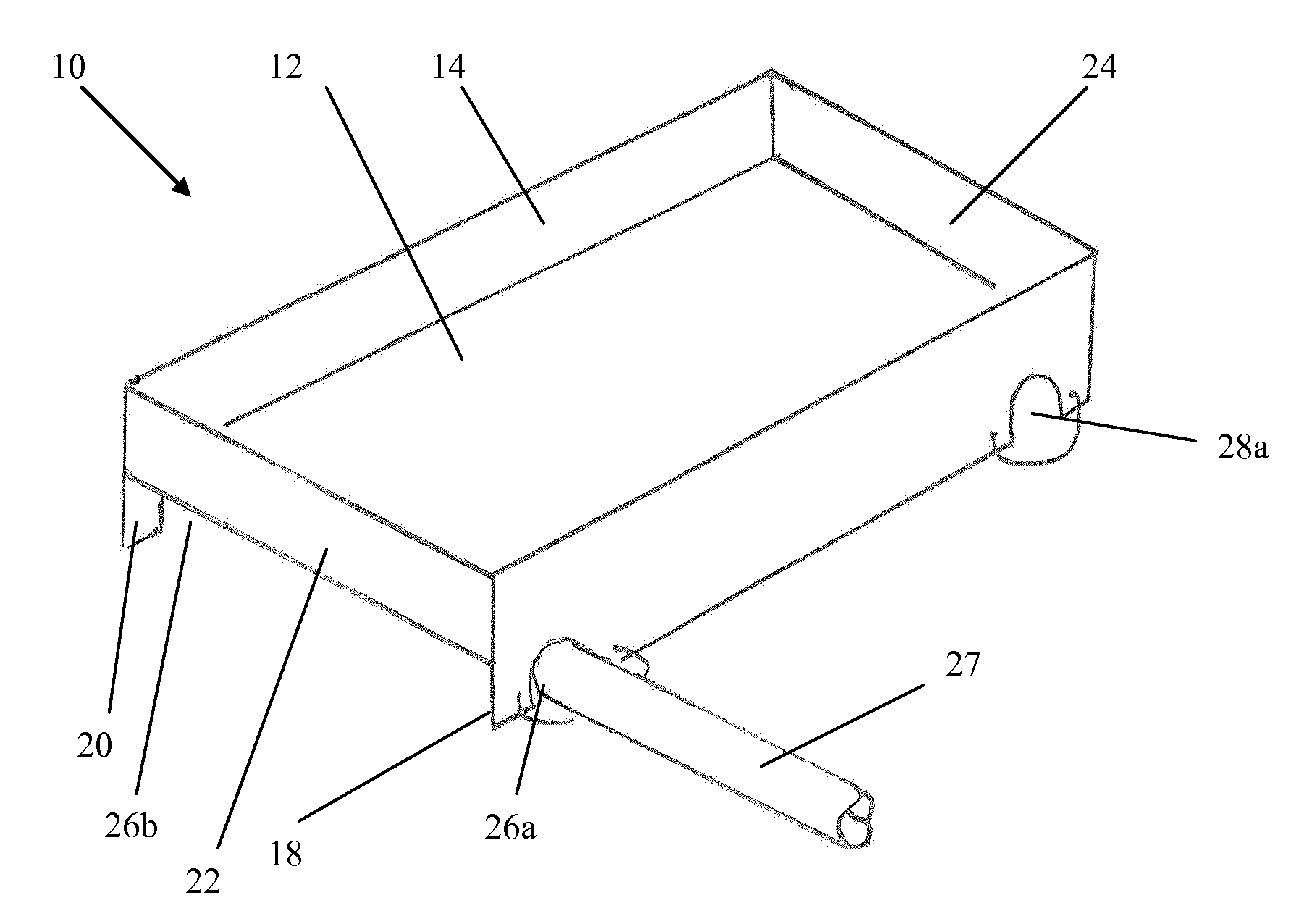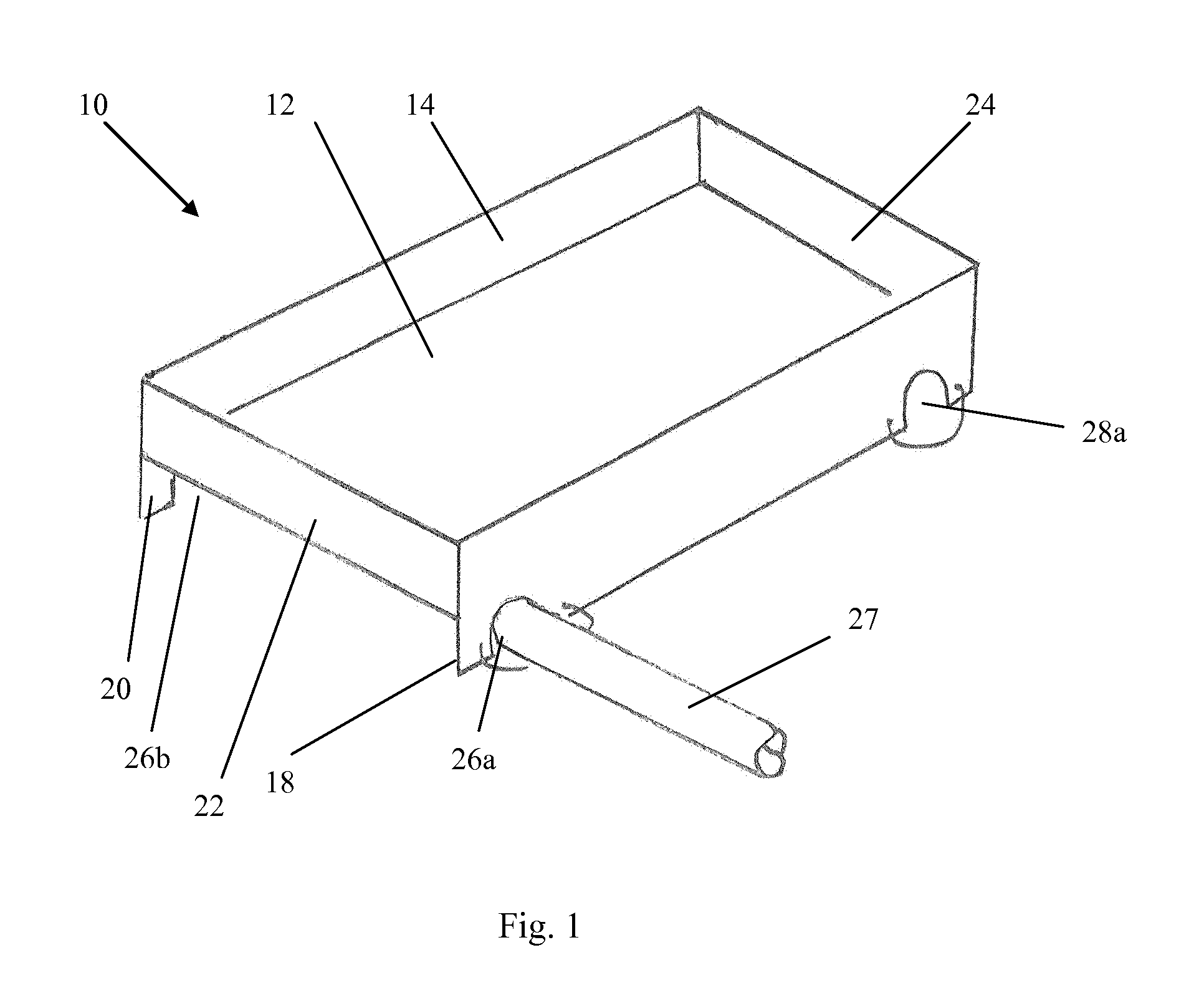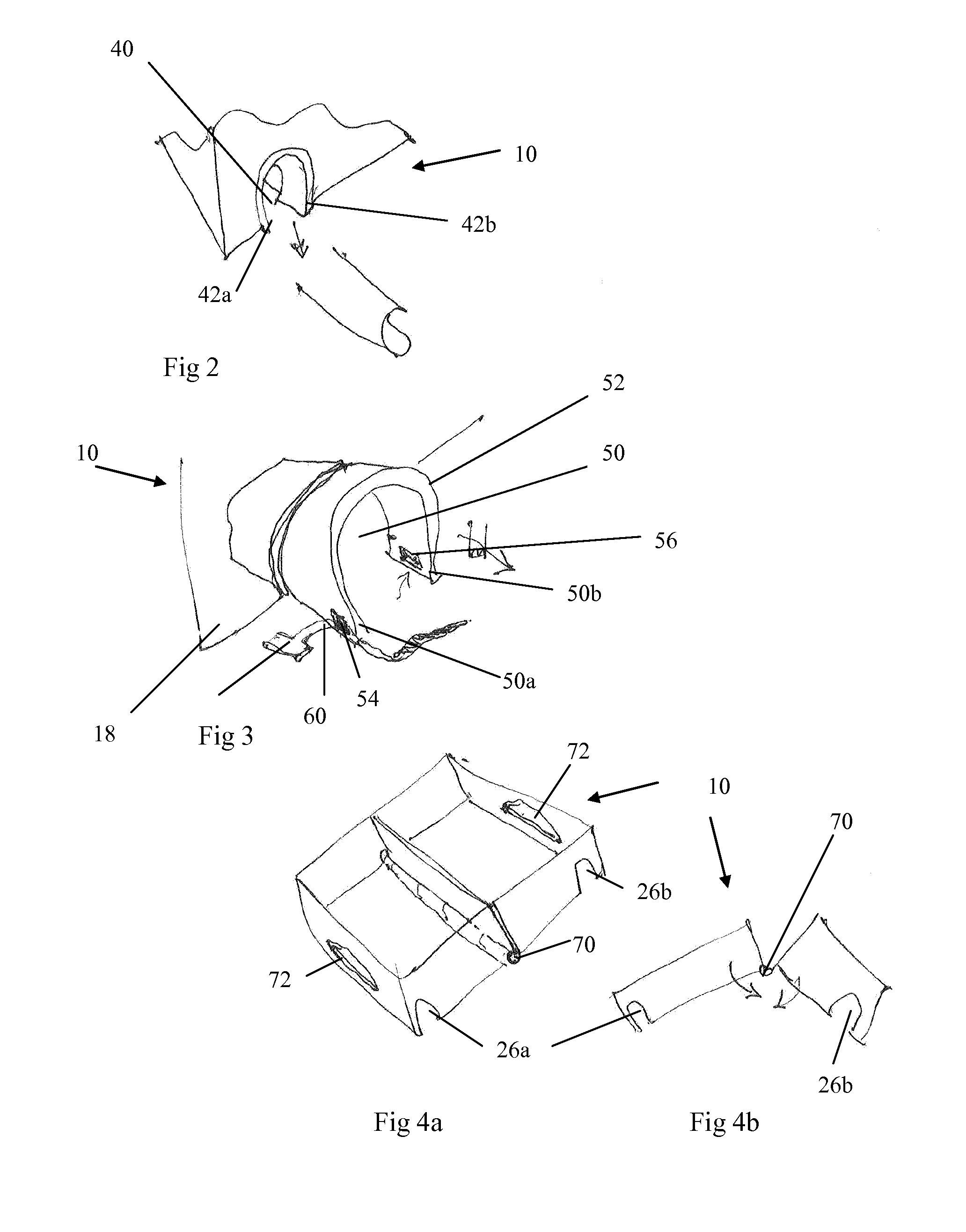Scaffold tray
a technology for scaffolds and trays, applied in the field of scaffolds, can solve the problems of reducing the number of movable parts that are vulnerable to wear and fracture, and achieve the effects of reducing the likelihood of wind disengaging the scaffolds, facilitating the necessary push-fit of the scaffolds, and reducing the cost associated
- Summary
- Abstract
- Description
- Claims
- Application Information
AI Technical Summary
Benefits of technology
Problems solved by technology
Method used
Image
Examples
Embodiment Construction
[0036]FIG. 1 shows a lipped tray 10, for use on scaffolding towers, comprising a base portion 12, having a generally rectangular profile. An upwardly extending lip 14 is provided around the perimeter of the base portion 12. Along the long sides of the base portion 12 are downwardly extending skirt portions 18 and 20.
[0037]In the region adjacent to each of the smaller sides 22 and 24 of the base portion 12, a first recessed arc 26a is cut at one end of the skirt portion 18, and a corresponding recessed arc 26b is cut into the skirt portion 20 in a position substantially the same distance from the end of the base 12. The diameter of the recessed arcs 26a and 26b is sufficient to receive a scaffolding pole 27. Corresponding arcs 28a and 28b (not shown) are provided adjacent to the side 24 of the base from 26a and 26b in the skirt portions 18 and 20.
[0038]When in use, the tray 10 is positioned to engage two substantially horizontally successive scaffolding poles, within the arcs 26a, 26...
PUM
 Login to View More
Login to View More Abstract
Description
Claims
Application Information
 Login to View More
Login to View More - R&D
- Intellectual Property
- Life Sciences
- Materials
- Tech Scout
- Unparalleled Data Quality
- Higher Quality Content
- 60% Fewer Hallucinations
Browse by: Latest US Patents, China's latest patents, Technical Efficacy Thesaurus, Application Domain, Technology Topic, Popular Technical Reports.
© 2025 PatSnap. All rights reserved.Legal|Privacy policy|Modern Slavery Act Transparency Statement|Sitemap|About US| Contact US: help@patsnap.com



